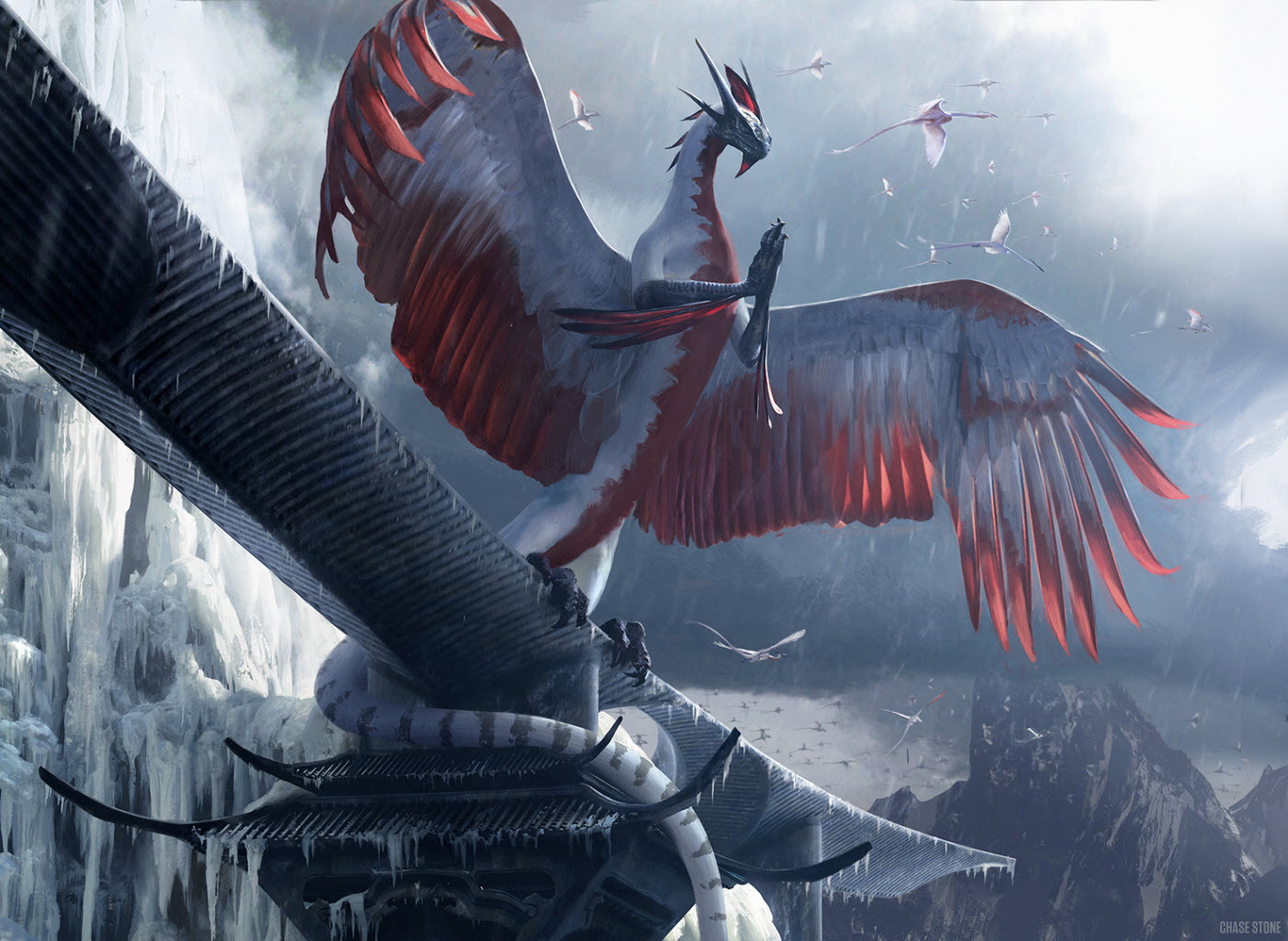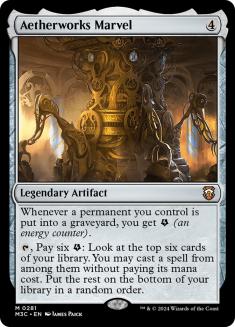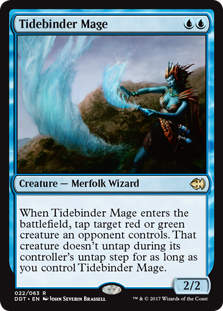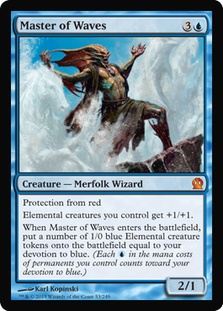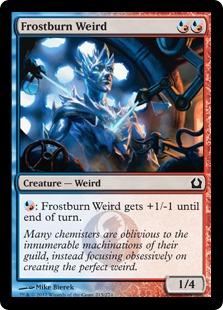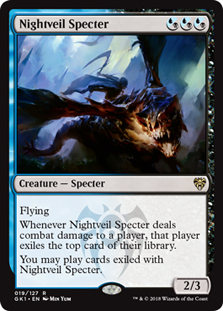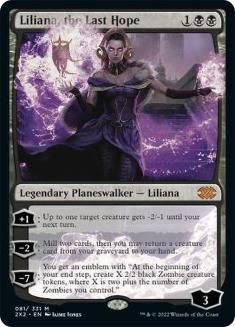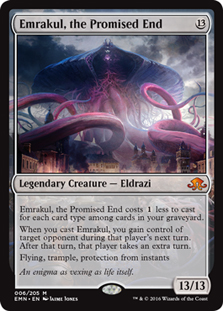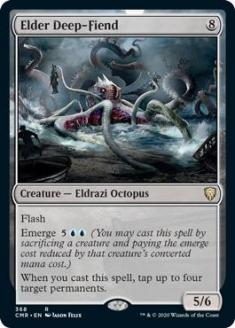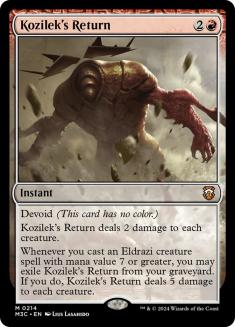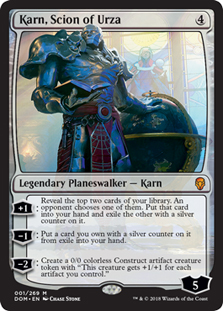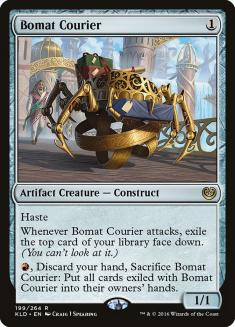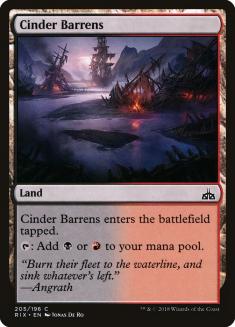Throughout my Magic career, I’ve played my share of incredible decks. This is to be expected — after all, I’m a professional player with a solid network of other professional players whose only goal for weeks ahead of each event is to come up with the best deck to play, so it makes sense that we succeed at least some of the time.
However, I’ve also played my share of very bad decks — not decks that just weren’t the best deck, but decks that were among the worst in the room, with which our entire team of elite players had below-average records. How does something like this end up happening? How can a team of some of the best players in the world get together for many weeks of testing and end up submitting one of the worst decks in the room?
The goal of this article is to rank the worst decks I’ve ever played at a major tournament, and in doing so examine why they were bad and what lessons can be drawn from the thought process that led to playing them, so that I (and you) don’t repeat them in the future!
Honorable Mention: Golgari Delirium at Pro Tour Kaladesh (2016)
Creatures (14)
- 2 Pilgrim's Eye
- 3 Kalitas, Traitor of Ghet
- 1 Emrakul, the Promised End
- 1 Distended Mindbender
- 3 Ishkanah, Grafwidow
- 4 Grim Flayer
Planeswalkers (4)
Lands (24)
Spells (18)

Why it was bad: Aetherworks Marvel was the most popular deck in the field and it was a really bad matchup. Our team did very well in Draft overall and very poorly in Constructed.
This Hawaii PT was very awkward for us because our deck ended up being awful but I think that, unlike every other deck in this list, most of that wasn’t actually our fault (which is why it’s only getting an honorable mention). Early on, we identified that Aetherworks Marvel was potentially very good, we tried to tune it, and we gave up because it was too inconsistent. Our mistake was assuming that everyone else was going to follow the same thought process.
The main issue was that the format was still incredibly new at that point — there had been one SCG event and that was it. Therefore, most decks that people were testing against were very raw and, frankly, quite bad. This created a scenario in which people’s Marvel decks were actually winning, even though they weren’t very good, so Marvel was the most-played deck. The Marvel decks were inconsistent and did not do well, as we predicted, but that didn’t stop them from beating us over and over.
On top of that, the fact that Marvel was so popular made the control decks rise to the top (two met in the finals) and we weren’t very good versus those either, with our maindeck splash for Radiant Flames and whatnot. I don’t think we would have covered ourselves in glory with this deck even if the metagame hadn’t been all wrong for it, but it was a fine deck for later on (in fact it became a Tier 1 deck at some point) while being embarrassing in the actual tournament.
To this day, I’m still not sure what the best deck for that tournament was — just that it wasn’t Golgari Delirium. The best deck later was probably the midrange Marvel deck, but no one had that deck at the tournament and even if they did it would not have been very good there, as it would have just lost to the all-in versions of Marvel that were the most-played deck (though once those swiftly disappeared, the midrange Marvel deck started to shine).
5. Mono-Red Devotion at Pro Tour Theros (2013)
Creatures (27)
- 4 Ash Zealot
- 4 Frostburn Weird
- 4 Burning-Tree Emissary
- 4 Boros Reckoner
- 3 Purphoros, God of the Forge
- 4 Stormbreath Dragon
- 4 Fanatic of Mogis
Planeswalkers (6)
Lands (25)
Spells (2)

Why it was bad: The best deck for that tournament was Mono-Blue Devotion. If you’re not familiar, this is the winning decklist:
Creatures (30)
- 4 Judge's Familiar
- 4 Frostburn Weird
- 4 Cloudfin Raptor
- 4 Nightveil Specter
- 4 Tidebinder Mage
- 4 Thassa, God of the Sea
- 2 Omenspeaker
- 4 Master of Waves
Planeswalkers (2)
Lands (24)
Spells (4)
Sideboard

This was a deck that maindecked four Tidebinder Mages and four Master of Waves, so it’s no surprise that playing a basically Mono-Red deck in that tournament didn’t turn out to be so great (our deck wasn’t literally Mono-Red, but every card in it was red).
The reason we ended up playing Mono-Red in this tournament, and not Mono-Blue like everyone else, was because our Mono-Blue list was very bad. For this, I was mostly responsible, as I was the person “in charge” of building that deck, and after trying for a while I declared it bad and we moved on. No one double-checked my work and we went into the tournament with the assurance that Mono-Blue was not going to be a real deck.
The reason our build of Mono-Blue Devotion was bad was because I was too constrained by my preconceived notions of what Mono-Blue is and how Devotion decks should be built. In my mind, “Devotion” decks were Nykthos, Shrine to Nyx decks, and not Mutavault decks. When I built Mono-Blue Devotion, my build was very geared towards control; I had Jaces, Aetherlings, and counterspells, and I didn’t even consider a more aggressive approach. Cards like Frostburn Weird and Nightveil Specter were already in the format and weren’t good, so they were not even on my radar for cards to play, let alone something like Cloudfin Raptor. It turned out that the best build was not at all control-oriented and actually played all these cards.
The lesson here is twofold. First, you should not just dismiss certain cards because they were previously bad in the format, especially if they work well with something new. In this case, it was obvious that we should have gone back to the hybrid cards because of the devotion mechanic, but we didn’t do a good enough job of that.
Second, you have to be careful to differentiate a deck being bad from a build of a deck being bad. I should have recognized that, while my list was bad, the archetype had potential if built in a different way, but I did not — the deck I had was bad, so I just threw it away and moved on. It’s a hard balancing act, since you can’t try literally every iteration of every deck, but I should not have rushed as much as I did.
4. Golgari Delirium at Pro Tour Eldritch Moon (2016)
Creatures (15)
- 1 Den Protector
- 2 Nissa, Vastwood Seer
- 2 Sylvan Advocate
- 3 Tireless Tracker
- 1 Emrakul, the Promised End
- 2 Ishkanah, Grafwidow
- 4 Grim Flayer
Planeswalkers (4)
Lands (24)
Spells (17)

Why this deck was bad: This wasn’t a bad deck per se, but it was quite bad in the context of that tournament because most of the good decks in that format just went over the top of you, which made a slower reactive deck without many disruption elements a pretty bad choice (though, ironically, Lukas Blohon won the tournament with a deck with a similar gameplan).
Testing for PT Eldritch Moon was quite interesting, as the format had a clear deck to beat in the form of Bant Company until a very powerful set completely changed the format. We did a good job of identifying that some of the new cards were busted, but we missed the most important one, and on top of that we completely failed to acknowledging that other people would also try to find the busted cards, which would completely change the metagame.
When the set came out, the main priority for us was beating Bant Company, so we were naturally drawn towards Liliana, the Last Hope, which we quickly pegged as the most powerful card in the set. Most of our time was then used to try to maximize that card, which I think we did a reasonable job of.
The issue was that the actual most powerful card in the set — Emrakul, the Promised End — matched up very well against Liliana, the Last Hope and many teams ended up with turbo-Emrakul decks. On top of that, there were also builds based around Elder Deep-Fiend and Kozilek’s Return that we completely missed and that also beat us badly. This created a scenario in which we were actually losing to everyone who followed the exact same steps as us (trying to build with the broken cards) because we picked the wrong new card to build around.
Our deck was quite good at beating the decks from last week but it was not good at beating the good decks that showed up in the actual tournament. In this regard, it’s not so different from the other time we played Golgari Delirium, except that in that tournament I felt like people had gone off the rails with their deck choice and this time their decks were just good, so this time the blame rests entirely on us. In hindsight, perhaps I should stop playing Golgari Delirium decks too.
This tournament taught me two things. First, you can’t tunnel down too much on one card. I do think it’s good to try to make the new, potentially busted things work, but you need to do at least some branching out to investigate the other new, potentially busted things. In our case, we were so in love with Liliana that we barely played with Emrakul and it ended up being an afterthought one-of in our Delirium list when we could just have played four of them in a much more focused list had we explored this possibility.
The second thing is that it’s a mistake to assume everyone else is idle. Magic nowadays moves very quickly and people are very good at finding out what is good. Let’s take, for example, the Players Tour Finals early this year. Before that tournament, Temur Reclamation was all the rage and almost no one was playing Four-Color Reclamation, but during the actual tournament Four-Color Reclamation was heavily present and successful. Similarly, before the Mythic Invitational, Jund Sacrifice wasn’t a big part of the Historic format, but at the tournament it was one of the most popular decks and definitely the most successful. In both cases, the players did a great job at converging towards the right conclusions, and if you did not expect that, you were caught off-guard and did poorly.
3. Selesnya Humans at Pro Tour Avacyn Restored (2012)
Creatures (33)
- 3 Borderland Ranger
- 4 Fiend Hunter
- 4 Champion of the Parish
- 4 Avacyn's Pilgrim
- 4 Mayor of Avabruck
- 3 Thalia, Guardian of Thraben
- 2 Restoration Angel
- 4 Silverblade Paladin
- 4 Wolfir Silverheart
- 1 Riders of Gavony
Lands (24)
Spells (3)

Why it was bad: Our deck had no good matchups. The most popular deck was Naya Midrange, a deck that absolutely destroyed us, and all the new decks people came up with also beat us. Our team of about fifteen people playing this deck put something like one person in the Top 64.
When this tournament happened, I liked to think that the reason we did so badly was that we misread the metagame — we didn’t think people should play Naya, and they did, so we lost to them. In reality, however, our deck wasn’t very good against anything else either (though we did misread the metagame badly and Naya being the most popular deck really put the nail in our coffin). The real culprit of us choosing this deck wasn’t the missed read on the metagame, though, but the fact that we simply slacked off.
PT Avacyn Restored happened at a time where our team was almost inarguably the best team in the world. It was the last PT in the season, and the majority of us had already locked our spots for everything — the highest level at the time, Worlds, etc. — and I think we let that get to us.
We arrived at this deck very early on in the testing process and we just never moved away from it because to do so would be to have to do all the work again. We convinced ourselves that it was good because no one wanted to have to find something else. We even had Kibler try to build a different deck, but we simply didn’t want to do the work and we mostly left him to fend for himself in exploring this deck of his. It turned out that, after the tournament, an updated version of his deck became the best deck in the format, and if we hadn’t been so lazy we could have found it with him.
I guess the lesson here is twofold. First, human beings have a tendency to believe the things that are convenient for them, so we rushed to believe our deck was great because we wanted it to be great. Second, there’s no amount of raw talent that can make up for doing no work. If you don’t do the work, you will not do well.
2. Simic Karn at Pro Tour Dominaria (2018)
Creatures (21)
- 4 Llanowar Elves
- 4 Verdurous Gearhulk
- 4 Glint-Nest Crane
- 1 Servant of the Conduit
- 4 Scrap Trawler
- 4 Walking Ballista
Planeswalkers (4)
Lands (24)
Spells (11)

Why it was bad: Boy, where do I start? Basically, this deck was just too underpowered and sacrificed too much card quality for synergy in the hopes of powering up Karn, Scion of Urza.
To illustrate the issues, I’ve included a helpful comparison chart with the “deck to beat” for the event, Rakdos Midrange.
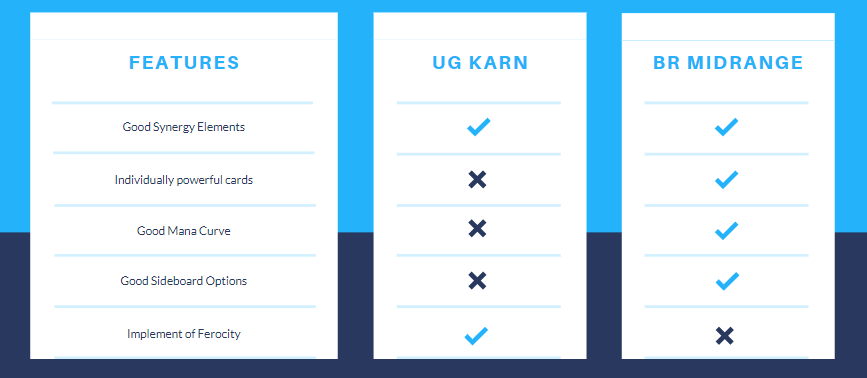
It turned out we didn’t even have a good matchup versus the most popular deck (we only thought we did because our versions were bad), and most of our team did quite badly with this deck (though some people had reasonable performances).
Despite my horrible result, this PT was actually very illuminating for me because it cemented a change in paradigm that I carry with me to this day. You see, the main reason I ended up playing Simic Karn was not that I was in love with it — I really didn’t like it very much — but that I simply didn’t like anything else. And the reason I didn’t like anything else was because we just refused to work on the stock deck, which meant we didn’t even have a version of it, let alone a good version.
I remember that on the day of deck submission some people wanted to play four Bomat Courier and some people wanted to play zero. Some people wanted to play Cinder Barrens and some felt the mana was fine with a bunch of basics. No one could agree on anything and no one was convinced they were right.
When it came to choose my list for the tournament, I had to basically choose between a very raw version of the best deck, with a manabase that seemed sketchy at best and incoherent last-minute changes and sideboard plans, or a super-tuned version of our deck, and I chose the latter.
When we first started our testing team over a decade ago, tournament Magic was in a very different place. There wasn’t as much information available online and many good things remained undiscovered until the day of the PT — sometimes they even remained undiscovered throughout the PT. We had many tournaments where we showed up with the actual best deck in the room and we were the only ones to do so. When this happens, it’s a dream come true for any competitive Magic player.
For years we clung to the notion that this was not only possible but almost always within our grasp to achieve, which meant we dedicated most of our resources to getting there. If we were to divide our testing time, I’d say that we spent roughly 80% of it trying to break the format. If that failed, we always had the fallback of playing the most popular deck, which we’d work on in the remaining 20% of the time.
The issue is that, at some point, the paradigm shifted. Information started to become more readily available, tournaments started happening further away from the release of the set, and many decks came relatively pre-built because they relied on the set mechanics or specific tribes. For example, it’s hard to say that anyone discovered decks based around energy or Food or Vampires — you just throw together every card with the words “energy,” “Food,” or “Vampires,” and that’s a deck. Nowadays, these decks often appear before the set is even released during the Early Access Event!
This creates a scenario where “breaking it” the same way we did before is almost impossible. Instead, people break the format at a much smaller level, either by tweaking the manabase, having a specific sideboard plan, or simply understanding how to play a matchup better. However, these are all things that you can’t achieve if you don’t spend a lot of time practicing and tuning the actual best deck, and you can’t do that if you spend all your time trying to break the format with Simic Karn. The solution, then, is to spend 20% of your time trying to break the format and the remaining 80% tuning the best deck and learning how to play it — the opposite of what we had been doing.
After this PT, I realized this was the case and changed how I approached testing for big tournaments. Instead of spending all my time trying to beat Hogaak in London, we settled on Hogaak ourselves early on and ended up with a very good version of it. Instead of trying to beat Simic Food, we spent all our time playing Simic Food mirrors to figure out what was important in that match and what exactly we wanted our deck to look like. When Ondrej and I met in the finals of Mythic Championship VI, we did so playing the same deck as 70% of the field (Simic Food), but our list was slightly better, our sideboard plans were slightly better, and we were playing our deck slightly better, which we could only accomplish because we gave up trying to break the format very early on and actually focused on the best deck.
The realization that Magic went from being a game of huge deckbuilding edges to being a game of tiny deck-tuning edges was largely responsible for our success in that tournament. To me, the breakthrough that led to this realization was Simic Karn.
1. Esper Dragons at Pro Tour Shadows over Innistrad (2016)
Creatures (10)
Planeswalkers (1)
Lands (26)
Spells (22)

Why it was bad: It was just a very bad deck with few good matchups, and on top of that you got into the Esper arms race — the Dragons were good versus most of the field but quite bad versus the regular Esper decks. On top of that, many people came out with new decks for this tournament and they were mostly good versus Esper Dragons.
I don’t think this is the worst deck I’ve ever played related to the rest of the field, but it’s definitely the worst deck I’ve ever played related to what else I could have played because this was the tournament at which my team debuted the Selesnya Tokens deck that Steve Rubin won the Pro Tour with and that became a Tier 1 deck for the rest of its tenure in Standard (the original concept actually came from an SCG event, but we made enough meaningful modifications to it that the deck became significantly different and better):
Creatures (16)
Planeswalkers (8)
Lands (25)
Spells (11)

You know this thing I just said almost never happened nowadays? For this tournament, it actually happened — my team had a busted deck that no one else in the field had. This is every professional player’s dream and I wasted it. For this I have only myself to blame and this remains to this day my biggest ever regret in deck selection, because I could have chosen a 10 and instead I chose a 2. I didn’t even like my Esper deck very much!
The reason I didn’t play the Selesnya Tokens deck was simple — I didn’t trust my teammates enough. We discovered the deck quite late in our testing process and there was simply no time to make absolutely sure it was actually good. Many of my teammates told me it was very good, but I thought this was likely a lie they told themselves because they didn’t like any existing deck, so they clung to any semblance of hope that they might actually have a good deck to play. I didn’t know that it was bad, but I also felt that they couldn’t know that it was good, so I didn’t want to risk it.
The lesson here is, I guess, that if you’re going to have a team, you have to trust them somewhat; otherwise there’s no point in having a team to begin with. I’m not saying to blindly trust other people all the time and never do any work yourself, but you can’t be one of those people who delegate everything and then need to double-check the work of everyone, especially when a deck is found at a very late stage in the deck selection process. One person simply cannot play enough games with a deck to be sure about it in a couple of days, especially if they’re focusing on something else (in my case, Esper Dragons).
Besides that, there was a lesson for me to be less risk-averse. I’m naturally a person who focuses on the worst possible outcomes when it comes to Magic (which is, ironically, the reverse of how I am with everything else in life, as I tend to be quite positive in other things), which leads to missing several opportunities due to opting for the safe and comfortable.
I do think some measure of risk aversion is good, but if there’s a moment to take a risk, it’s when you know your alternative is mediocre, and I knew Esper Dragons was mediocre. It would be different if I hadn’t played the best deck to play the second-best deck instead, but I gave up the best deck for the actual worst deck. Given that I recognized my deck wasn’t even good, I should have definitely taken a risk on trusting my teammates and the new deck on this occasion.
These aren’t the only bad decks I’ve played in my life by a long shot, but they are the ones that immediately come to mind when I think of the worst I’ve ever played. The saving grace is that I did learn lessons from all of these tournaments, so hopefully my sharing with you can help you learn them as well.

